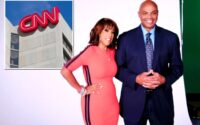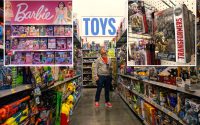Procter & Gamble profits from 10% price hike amid inflation
US shoppers are paying steep prices for everyday products such as Tide detergent, Gillette razors and Oral-B toothpaste — a trend that drove strong quarterly sales for parent company Procter & Gamble, according to results released Friday.
The consumer goods giant said it boosted prices by 10% across its various brands for the three months ending on March 31, with the largest increases impacting products in the fabric and home care category.
It was the second straight quarter of double-digit hikes for Procter & Gamble compared to pricing levels one year earlier. American households are footing the bill for lingering inflation as various companies pass along their higher costs to the public.
P&G’s CFO Andre Schulten said the company delivered strong results despite what was “still a challenging cost and operating environment.”
“The US consumer is holding up well,” Schulten added during a Friday earnings call.
Inflation has cooled since hitting a peak of 9.1% last summer, though it continues to weigh on household budgets. The Consumer Price Index rose by 5% year-over-year in March — its smallest increase in nearly two years, but still much higher than the Federal Reserve’s 2% target.
The Cincinnati-based firm’s third-quarter results topped Wall Street’s expectations.

Net sales jumped 4% to $20.1 billion, topping the $19.32 billion projected by analysts polled by Refinitiv. Net income was $3.42 billion, or $1.37 a share, beating an expected $1.32.
The company also boosted its outlook for 2023, predicting fiscal 2023 organic sales growth of 6%, up from an earlier projection for a 4% to 5% increase.
Shares of P&G rose nearly 4% in Friday trading on the strong results.

Sales were strong even though inflation-weary consumers bought fewer Procter & Gamble products.
“A concern for the company, which is taking price globally including the U.S., is at what point do we see (consumer demand) not work in their favor,” Samantha Palm, a portfolio manager at San Francisco-based Parnassus Investments, told Reuters.
“It’s not that we’re saying taking price is not justified, but taking price in what could be a recessionary environment in 2023, 2024 could have implications for consumers.”
Sales volume fell by 3% for the quarter, according to the company’s results. Still, that was an improvement from the 6% decline in sales volume the previous quarter.
Volume declines were sharper in Europe, plunging 7% as customers turned to private label competitors rather than shell out for premium-priced products.
The decline in sales volumes was “obviously driven by pricing,” according to Schulten.
“We see consumers being a bit more careful with dosing and drawing down inventories over time,” Schulten added.
Procter & Gamble also benefitted from the economic reopening in China — the company’s second-largest market after the US. Executives said they expect “a number of twists and turns along the way” as the country navigates the end of its COVID-19 lockdowns.
With Post wires


